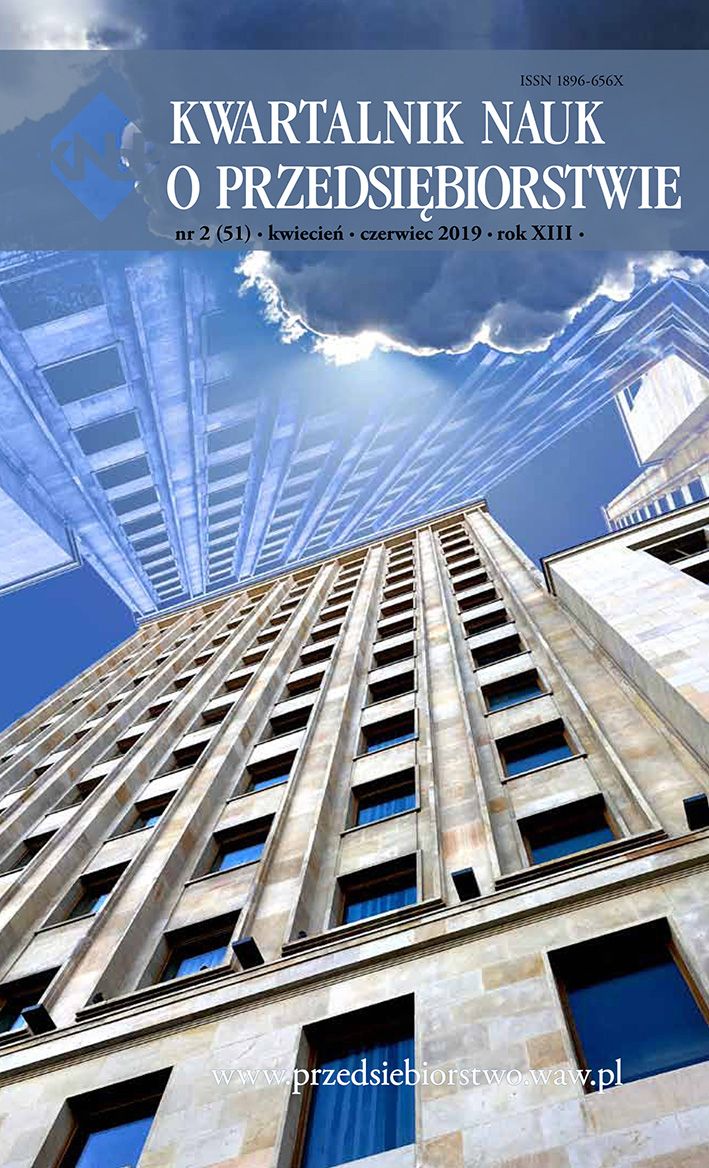Abstrakt
Celem artykułu jest analiza gotowości młodzieży mieszkającej w mieście Daugawpils (Łotwa) do założenia biznesu i określenie poziomu myślenia kreatywnego. Wyniki badań, przeprowadzonych przez autorki wśród młodych ludzi pn. Przygotowania młodzieży Daugavpils do biznesu wskazują, że 54 proc. ankietowanych brakuje pomysłów, co pokazuje, że młodzi ludzie nie są szczególnie kreatywni. W 2017 r. przeprowadzono badanie myślenia kreatywnego wśród młodych twórców, mieszkańców Daugavpils, przy użyciu testu E.P. Torensa. Jak pokazują wyniki badań, młodzież pod względem myślenia kreatywnego mieści się w ramach normy, ale jest duża część młodych ludzi, których poziom kreatywności mierzony testem testu E. Torensa jest poniżej normy.
Full Text
Bibliografia
Boden M.A. (2004), The Creative Mind: Myths And Mechanisms, Routledge.
Caplinska A., Stasane J. (2016), Readiness of Daugavpils youth for entrepreneurship, research, Daugavpils University, Latvia.
Caplinska A., Stasane J. (2017), Readiness of Daugavpils youth for entrepreneurship – with the use of E.P. Torrance Test, research, Daugavpils University, Latvia.
Goff K., Torrance E.P. (2002), Abbreviated Torrance Test for Adults Manual, Bensenville (Illinois), Scholastic Testing Service, Inc.
Guilford J.P. (1968), Intelligence, Creativity and their Educational Implications, California, Robert R. Knap.
Kaufman J.C., Plucker J.A., Baer J. (2008), Essentials of Creativity Assessment, Hoboken: John Wiley & Sons, Inc.
Kim K.H. (2006), Can We Trust Creativity Tests? A Review of the Torrance Tests of Creative Thinking (TTCT), ”Creativity Research Journal”.
Novatīva un radoša domāšana uzņēmējdarbībā (2014), http://innostartupproject.files.wordpress. com, access: 16/12/2018.
Oech R. (1983), Cashing In On Creativity, ”Inc. Magazine”.
Pašrealizācija radošā attīstībā ( 2015), Pieejams, http://latvuda.lv, access: 16/12/2018.
Pudmenzky A. (2004), Teleonomic Creativity: First Insights, http://alex.pudmenzky.com, access: 16/12/2018.
Radošums kā degviela biznesam (2017), https://www.diena.lv, access: 16/12/2018.
Reynolds P.D., Curtin R.T. (2011), New Business Creation. An International Overview, Springer.
Rothenberg A., Wyshak G., (2004), Family Background and Genius, ”Canadian Journal of Psychiatry”, Vol. 49, 185-91.
SEB (2015), No uzņēmējdarbības uzsākšanas Latvijas iedzīvotājus attur bailes un radošu ideju trūkums, SEB, http://www.seb.lv, access:16/12/2018.
Sternberg R.J, Lubart T.I. (1996), Investing in Creativity, ”American Psychologist”, Vol. 51, No. 7.
Torrance E.P. (1966), The Torrance tests of creative thinking: norms-technical manual. Research Edition-Verbal Tests, forms A and B figural tests, Princeton, Personnel Press.
Torrance E.P. (2008), Torrance tests of creative thinking: norms-technical manual, verbal forms A and B, Bensenville, Scholastic Testing Service.
Yin R.K. (2003), Case Study Research: Design and Methods, Sage Publications.
Тест креативности Торренса. Диагностика творческого мышления (2016), http://psycabi.net, access: 16/12/2018.
Autor
Autor (Autorzy) artykułu oświadcza, że przesłane opracowanie nie narusza praw autorskich osób trzecich. Wyraża zgodę na poddanie artykułu procedurze recenzji oraz dokonanie zmian redakcyjnych. Przenosi nieodpłatnie na Oficynę Wydawniczą SGH autorskie prawa majątkowe do utworu na polach eksploatacji wymienionych w art. 50 Ustawy z dnia 4 lutego 1994 r. o prawie autorskim i prawach pokrewnych – pod warunkiem, że praca została zaakceptowana do publikacji i opublikowana.
Oficyna Wydawnicza SGH posiada autorskie prawa majątkowe do wszystkich treści czasopisma. Zamieszczenie tekstu artykuły w repozytorium, na stronie domowej autora lub na innej stronie jest dozwolone o ile nie wiąże się z pozyskiwaniem korzyści majątkowych, a tekst wyposażony będzie w informacje źródłowe (w tym również tytuł, rok, numer i adres internetowy czasopisma).
Osoby zainteresowane komercyjnym wykorzystaniem zawartości czasopisma proszone są o kontakt z Redakcją.

